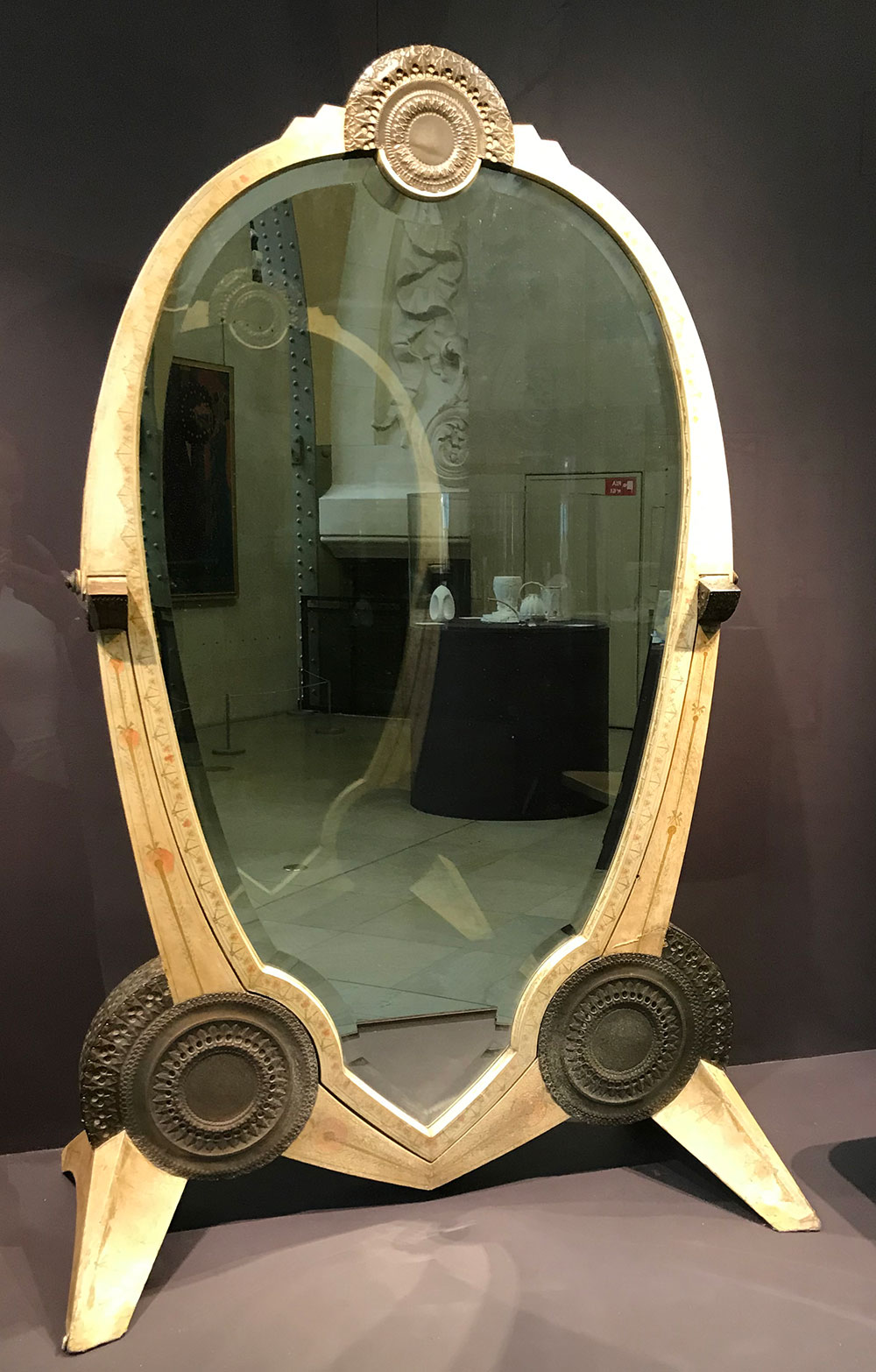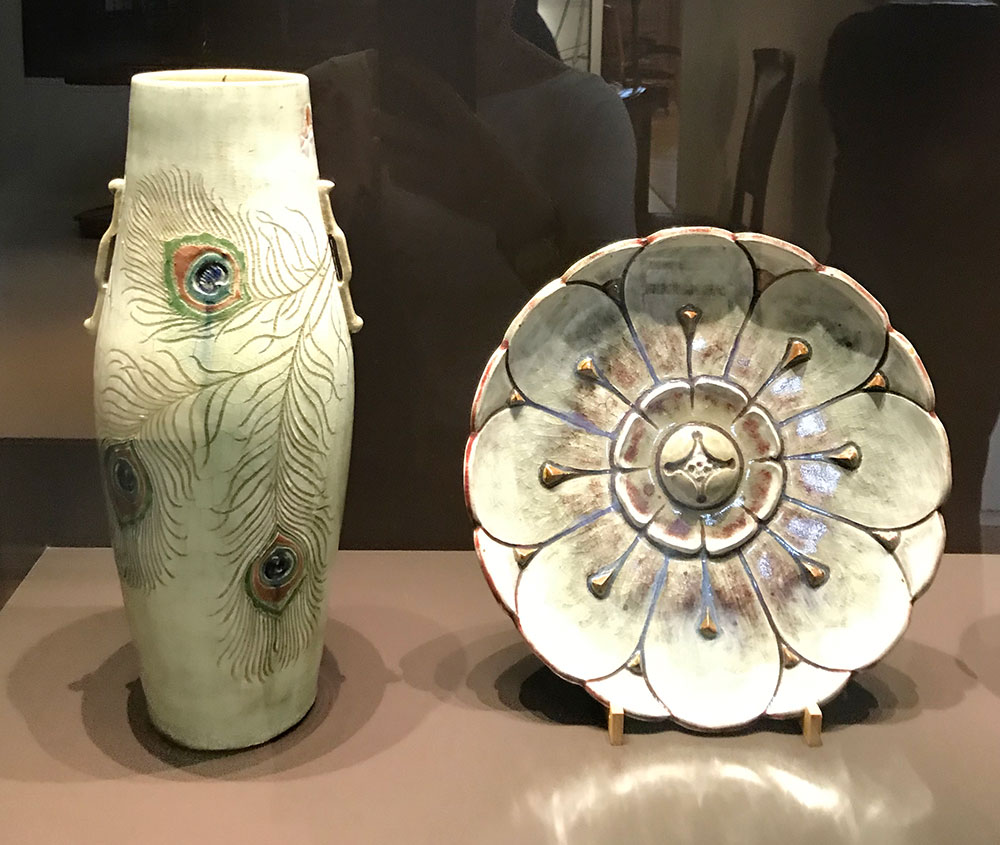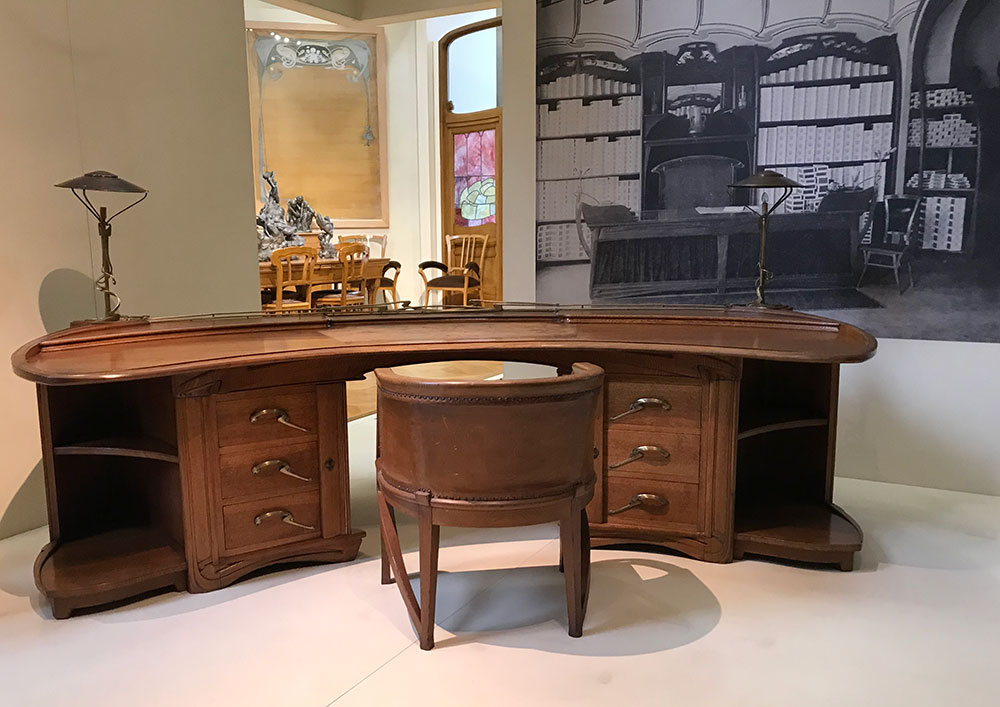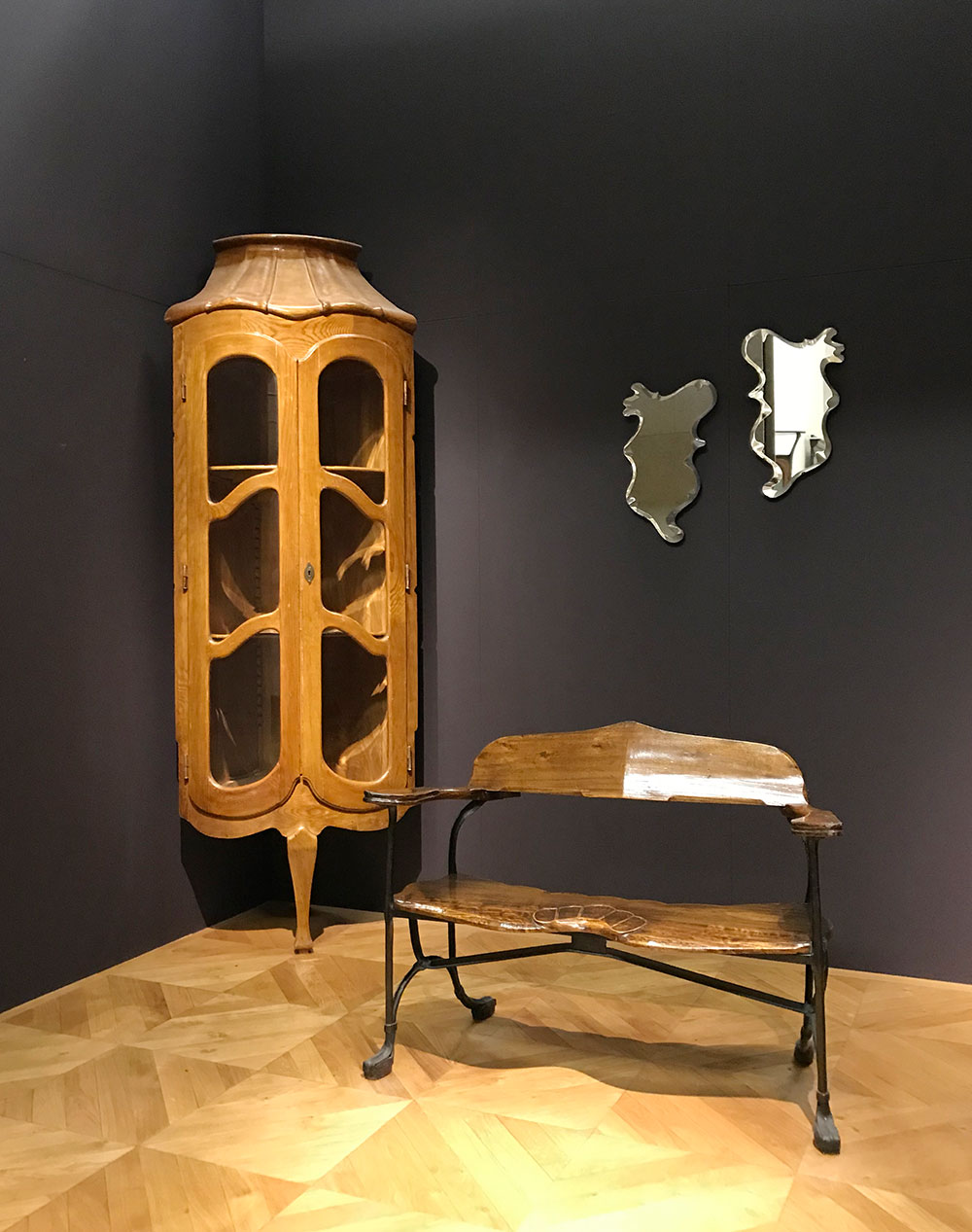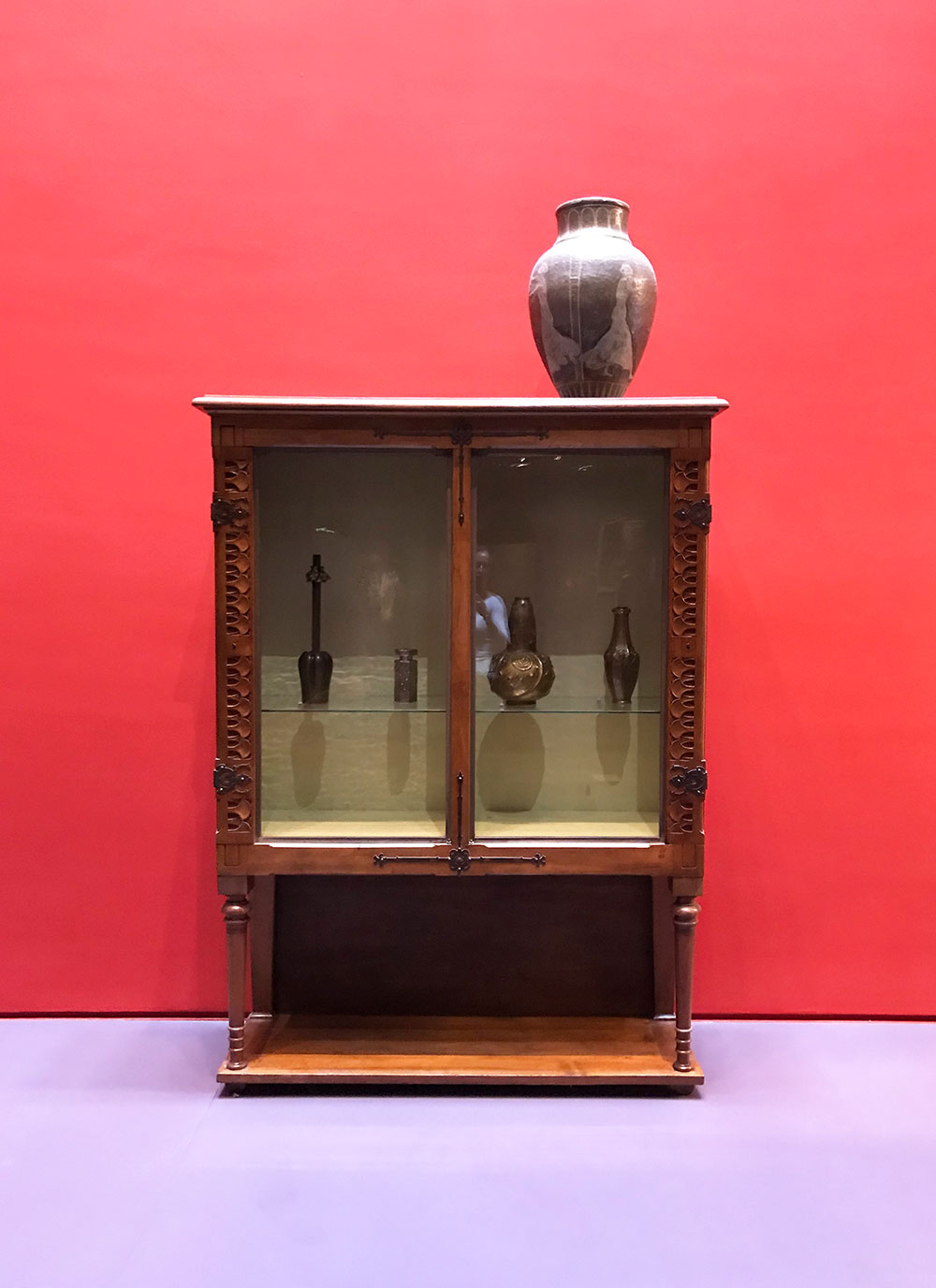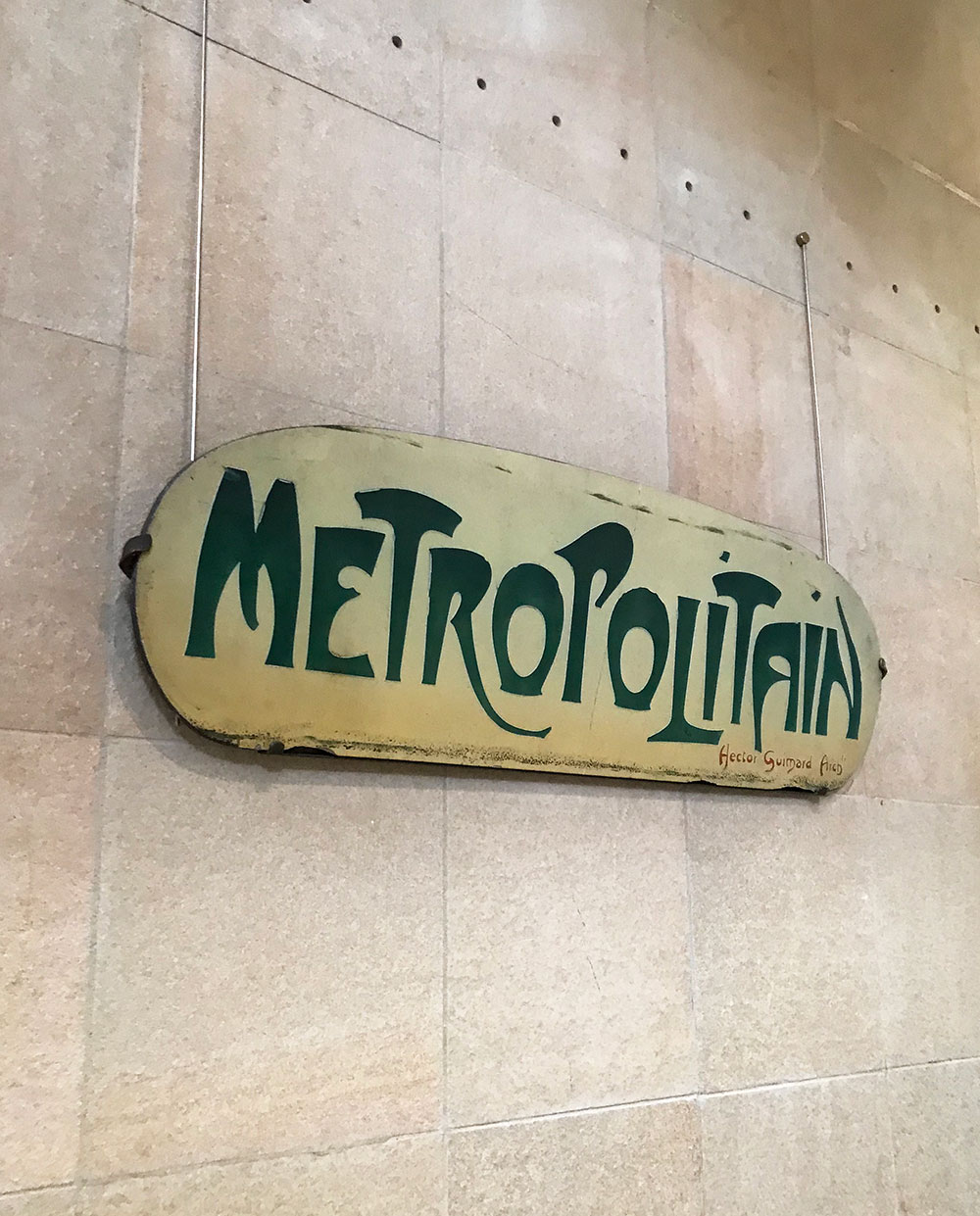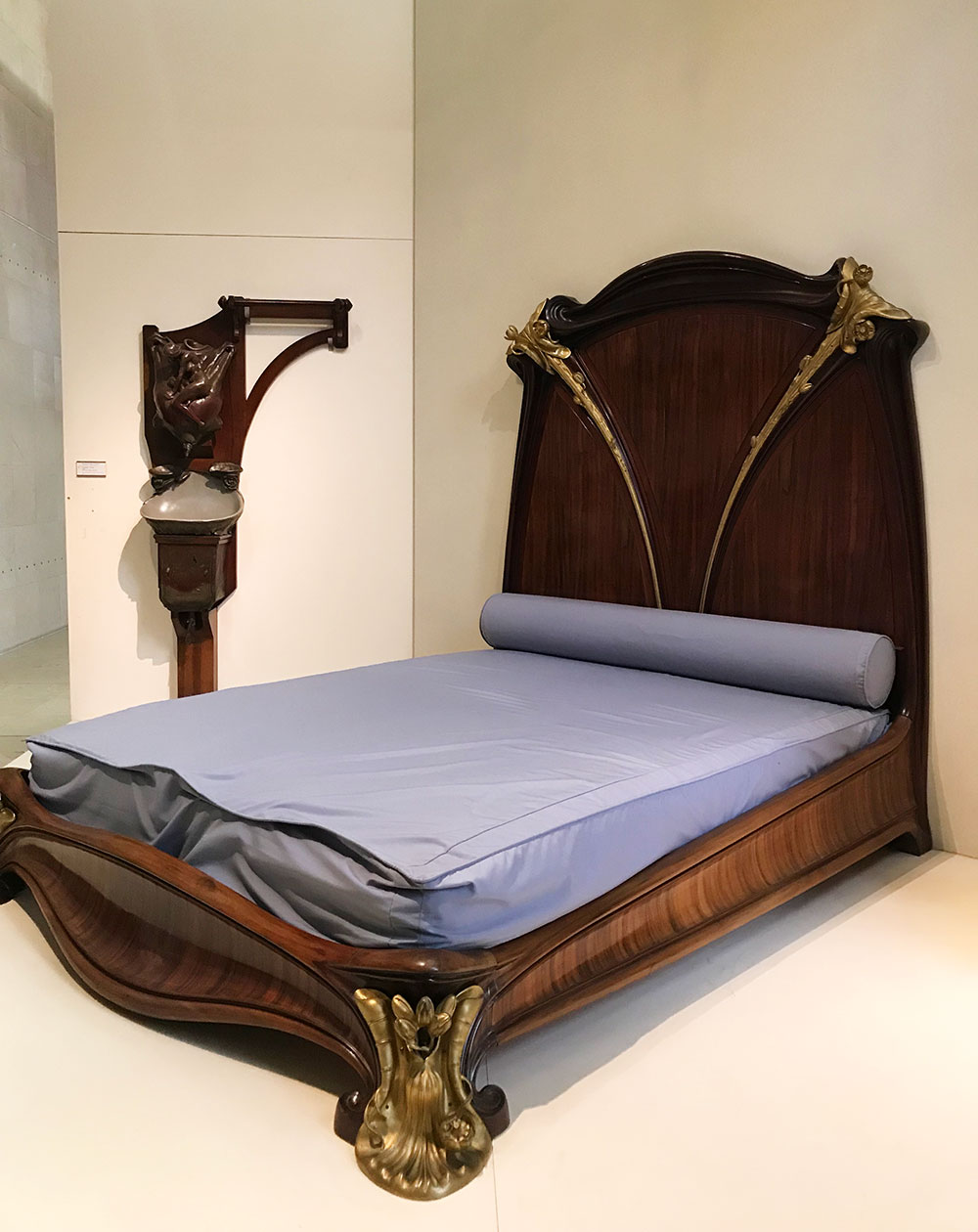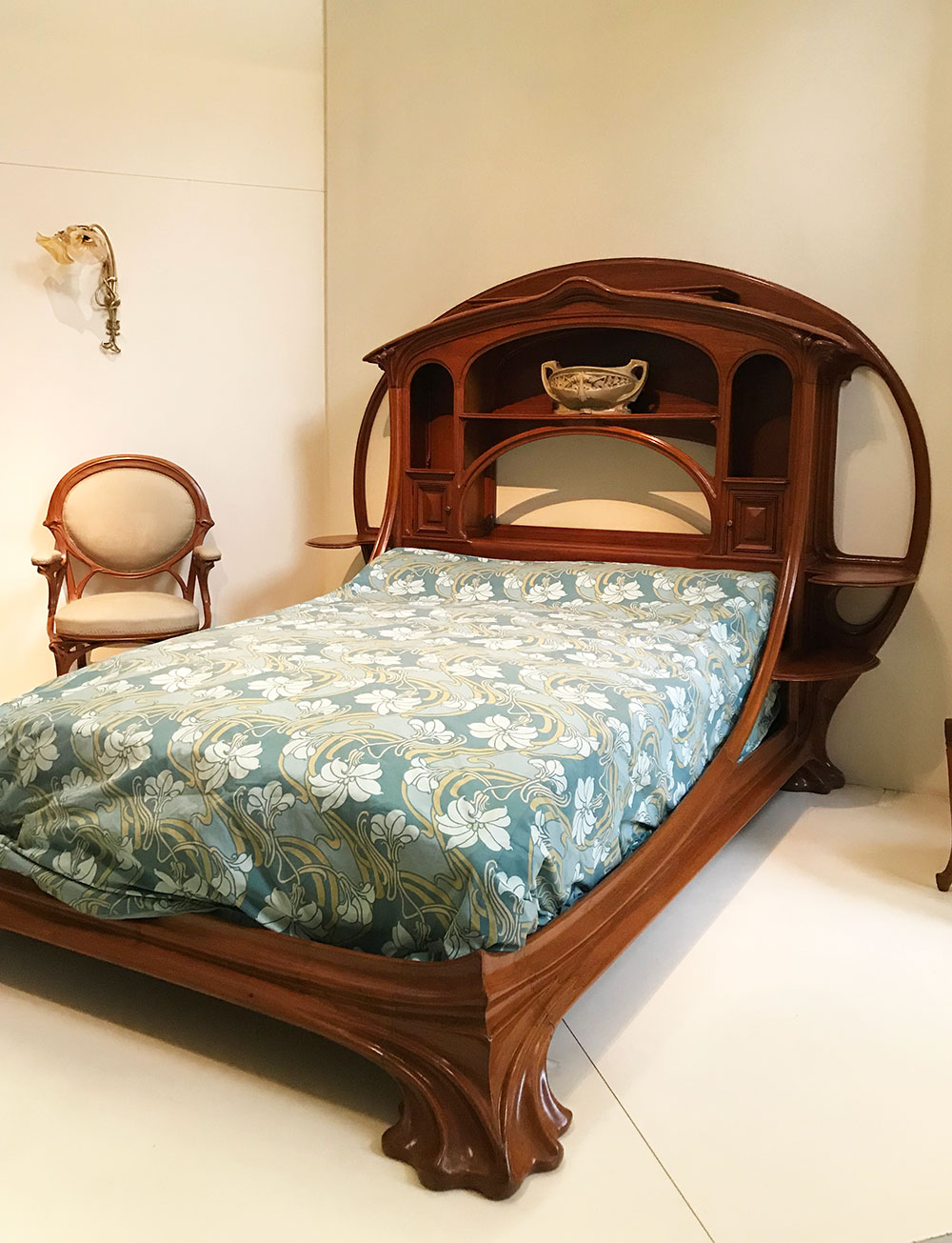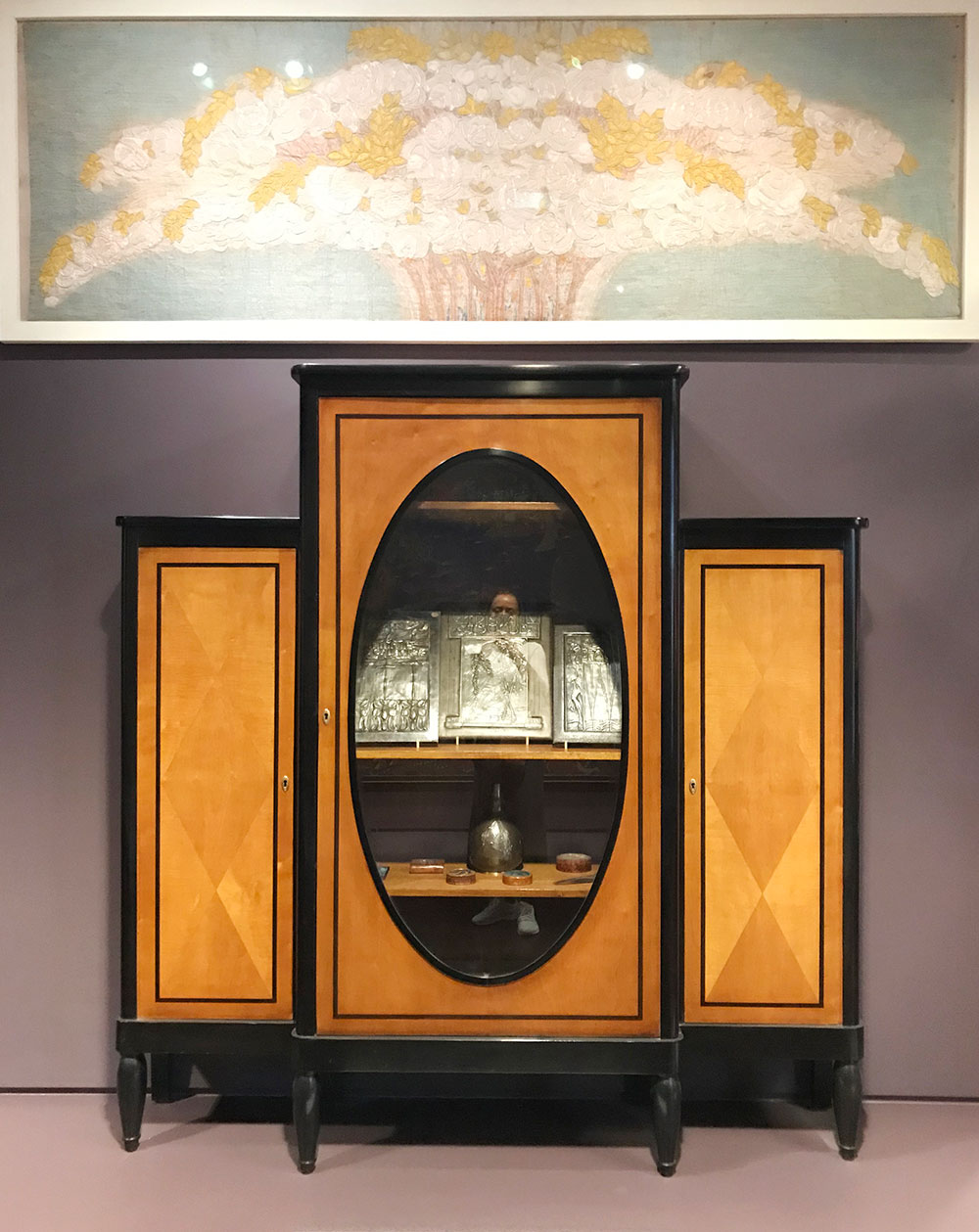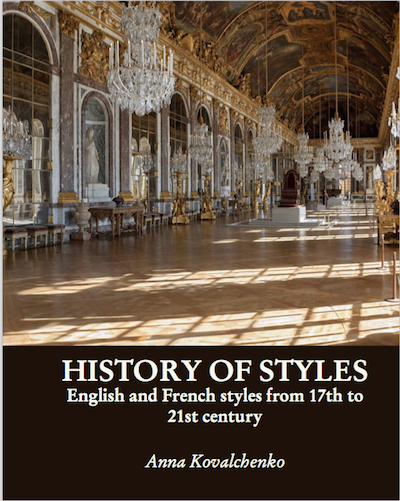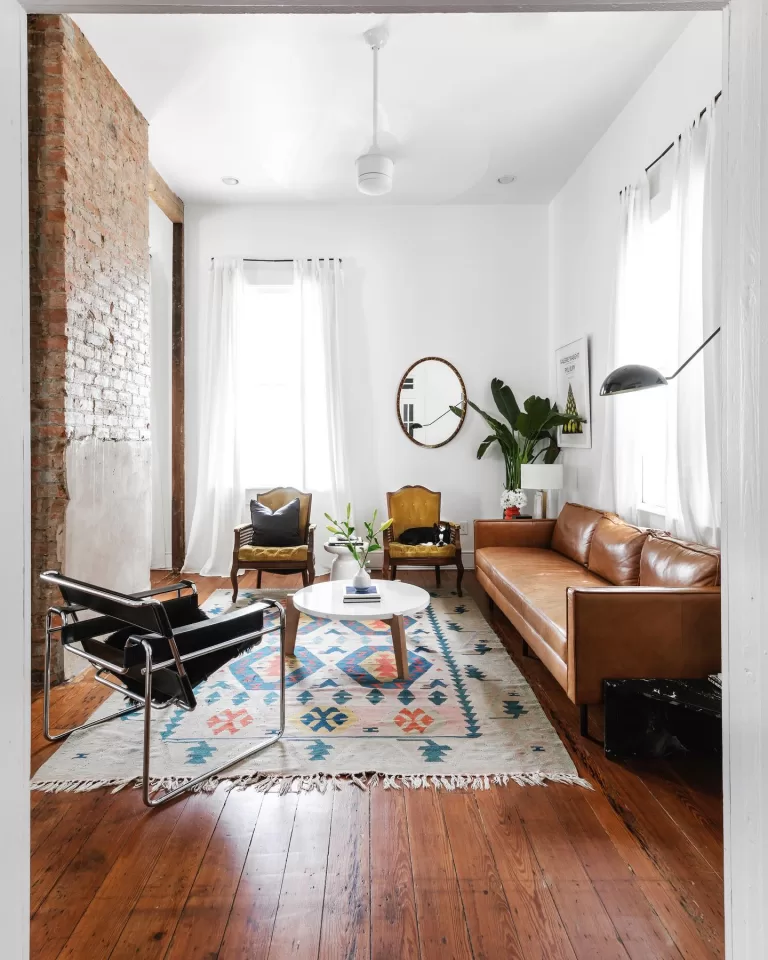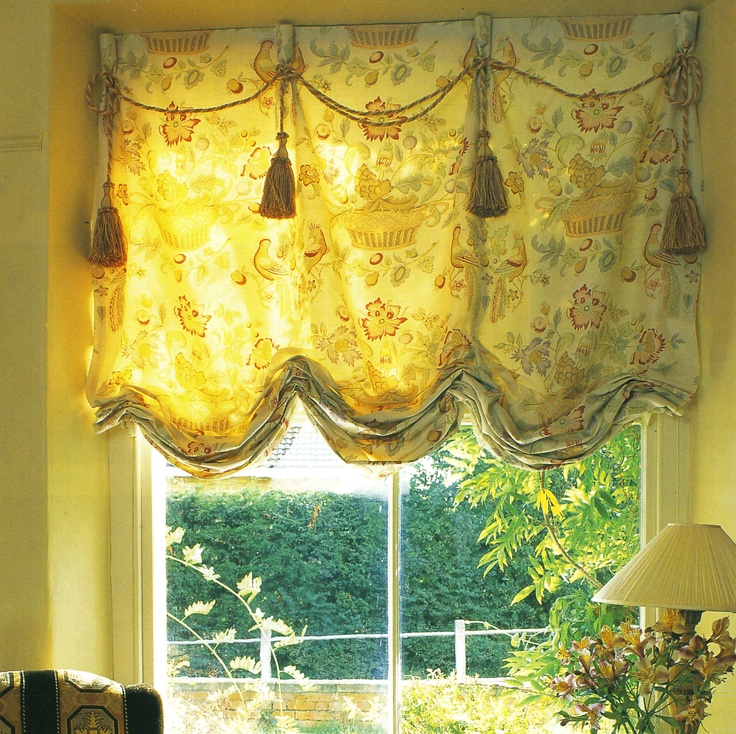Art Nouveau Furniture Collection in Musée d’Orsay
Musée d’Orsay in Paris is primarily famous for its art collection – stunning masterpieces of Van Gogh, Gogen and Monet attract the tourists from all over the world. Not everyone knows, though, that this museum is also a home of an amazing furniture collection of the Art Nouveau Period.
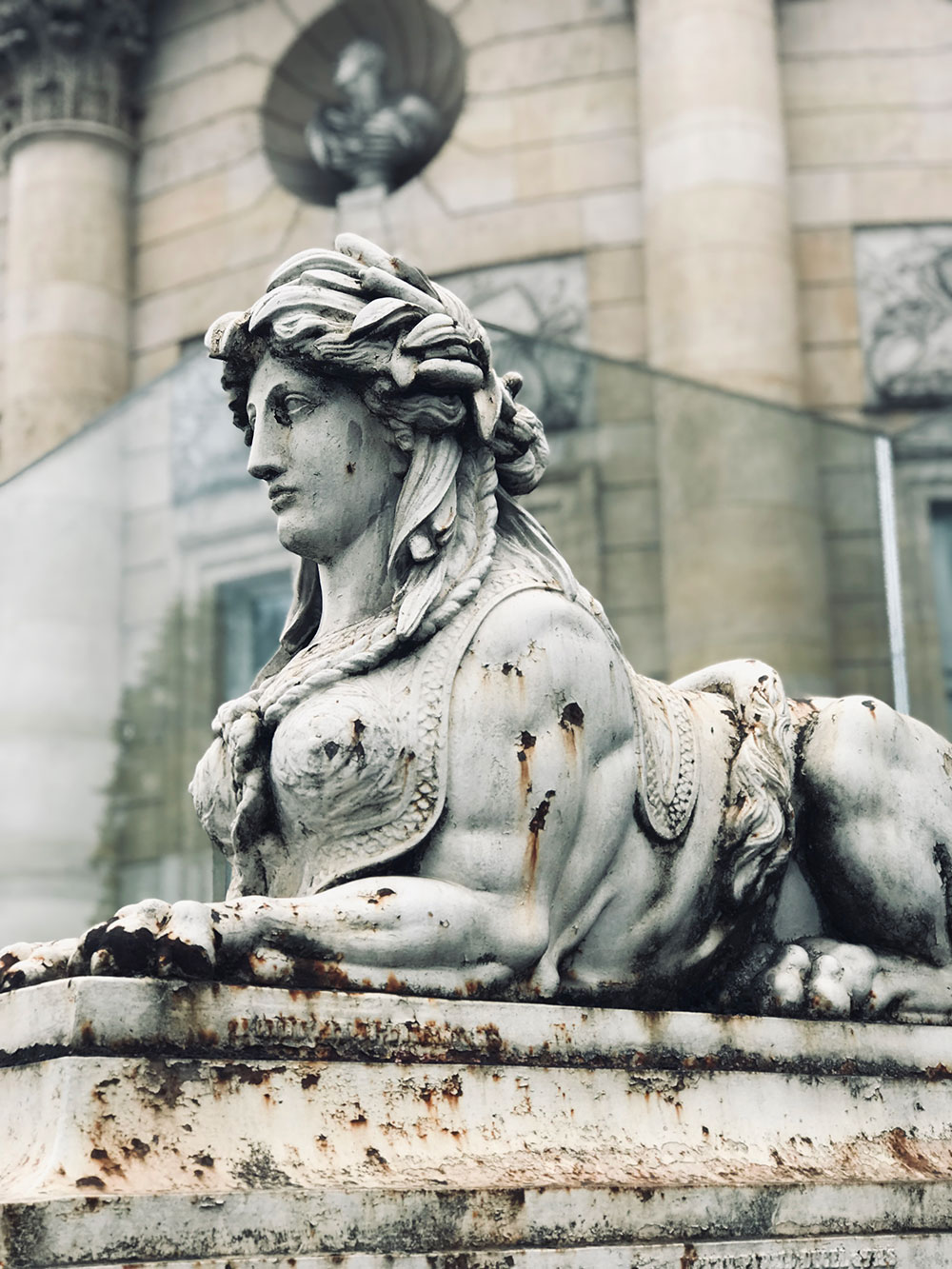
The museum’s building is remarkable by itself as it is a former train station. Filled with natural light it has several levels of exposition, the Art Nouveau furniture collection is located on the 3rd floor.
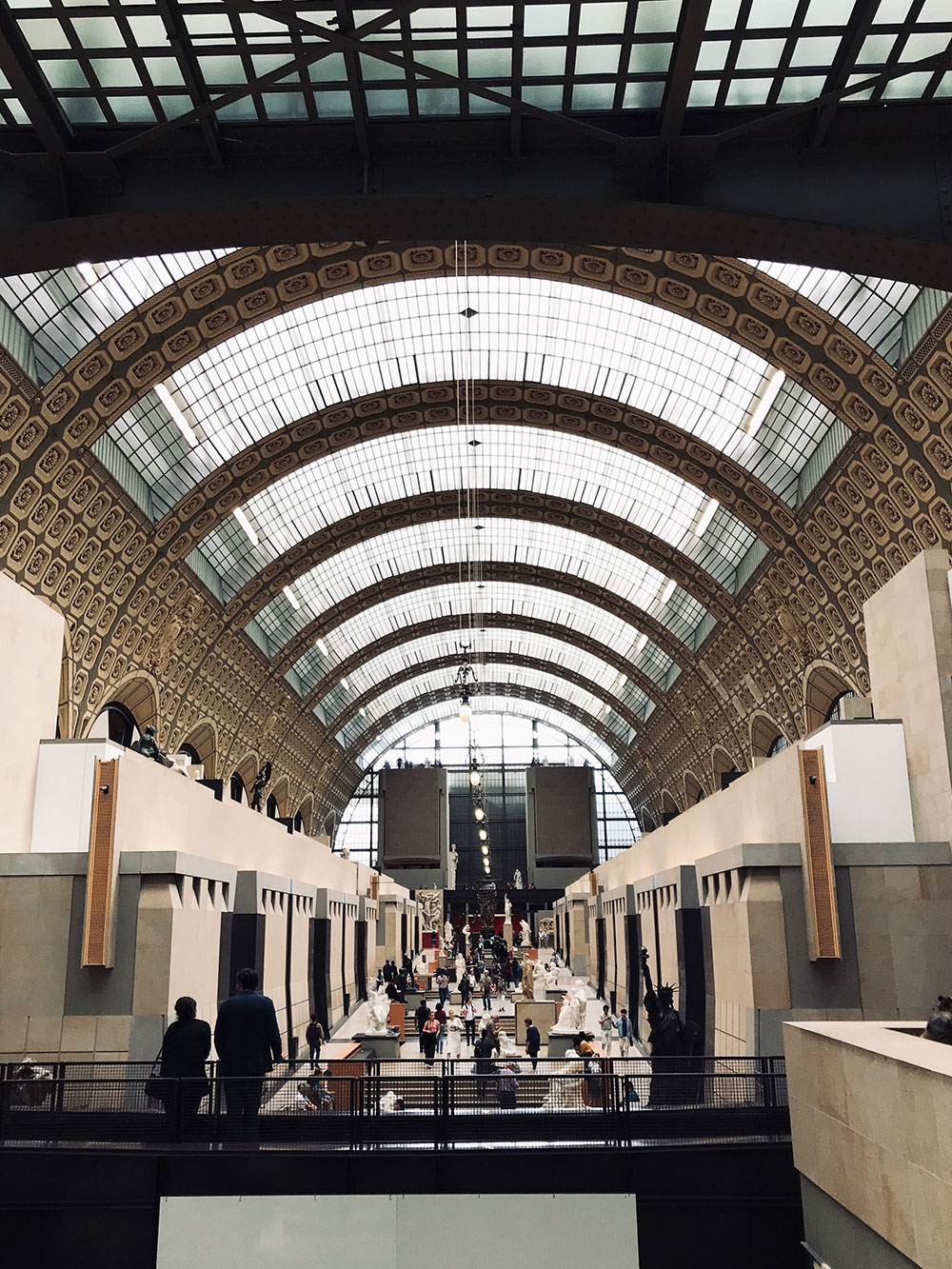
1977-1986: The Birth of a Collection
The Musée d’Orsay has brought together works scattered through various museums across the country (the Mobilier National, Ministère des Affaires Etrangères, the Musées-châteaux de Fontainebleau, Compiègne and Malmaison, the Louvre and the Musée de Cluny, etc.) where they were often not even displayed to the visitors. More than a hundred pieces were brought together without counting a number of long-term loans mainly from the Conservatoire National des Arts et Métiers and the Musée Christofle.
As the years went by, other remarkable sets of furniture came to fill in the worst gaps: works by Guimard (1979), Horta and Majorelle (1980), Gallé and Vallin (1982), Gallé, Carabin and Adolphe Loos (1983), Serrurier-Bovy (1984), Mackintosh and Frank Lloyd Wright (1985), Otto Wagner, Hoffmann and Van de Velde (1986). The collection includes the works of foreign artists as well: a vase by Otto Eckmann, chairs by Carlo Bugatti, a cabinet by Gimson, hangings by Voysey, gold work by Hoffmann, glasswork by Kolo Moser, and many more.
When the museum opened in December 1986, the inventory of decorative arts at the Musee d’Orsay listed over a thousand pieces, complemented by a little under a hundred works loaned by other institutions.
The collection of the Musée d’Orsay offers unique opportunity to study Art Nouveau movement in different countries, as well as its remarkable features that distinguish this style from any other.
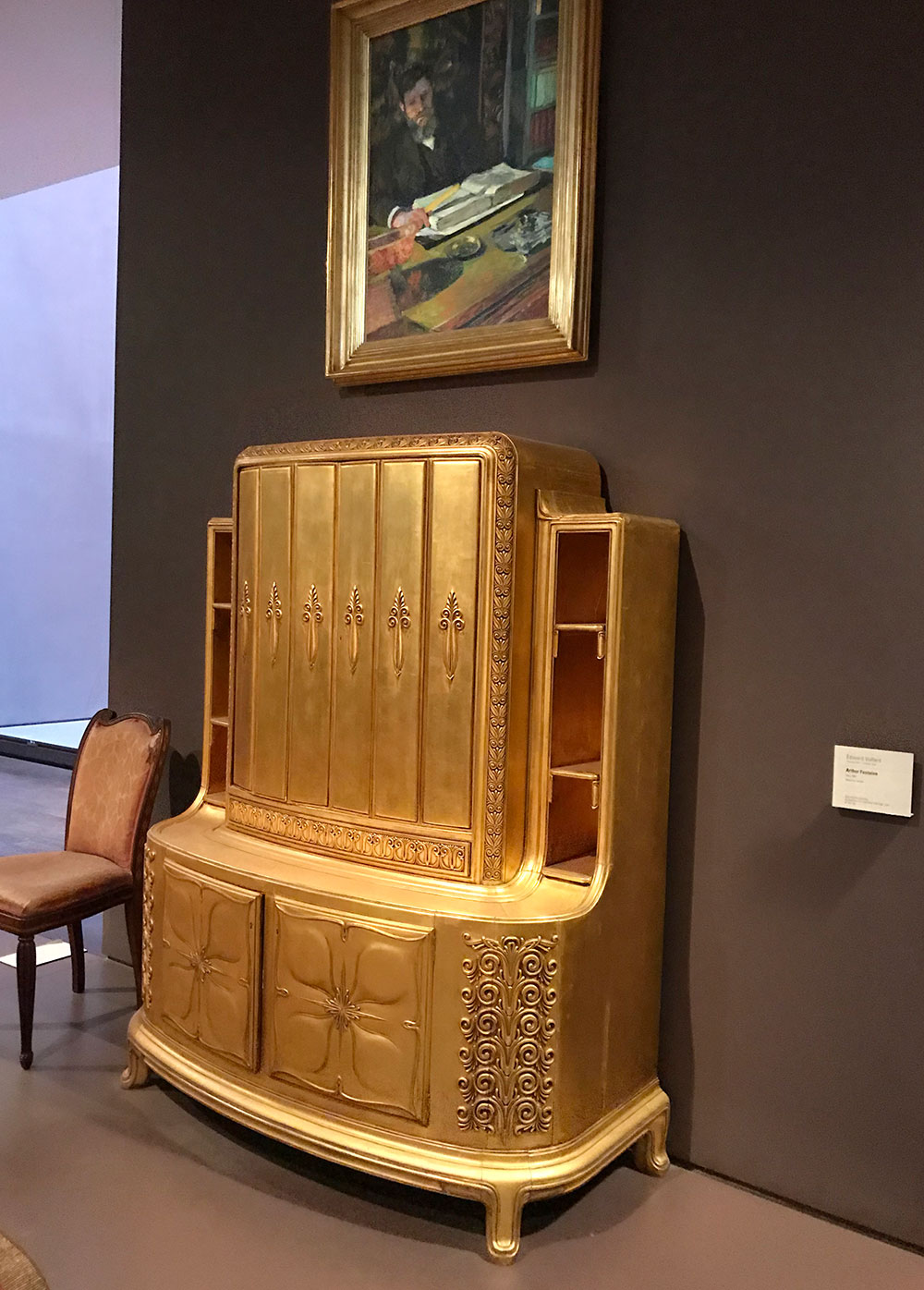
The model of this chair was drawn by Carlo Bugatti for one of the fully decorated rooms he presented at the first international exhibition of modern decorative art in Turin, in 1902. It represents on a human scale a shell of snail. Very soon nicknamed “camera a chiocciola” ( “snail”) this “installation” marks the top of Carlo Bugatti in the creation of furniture.
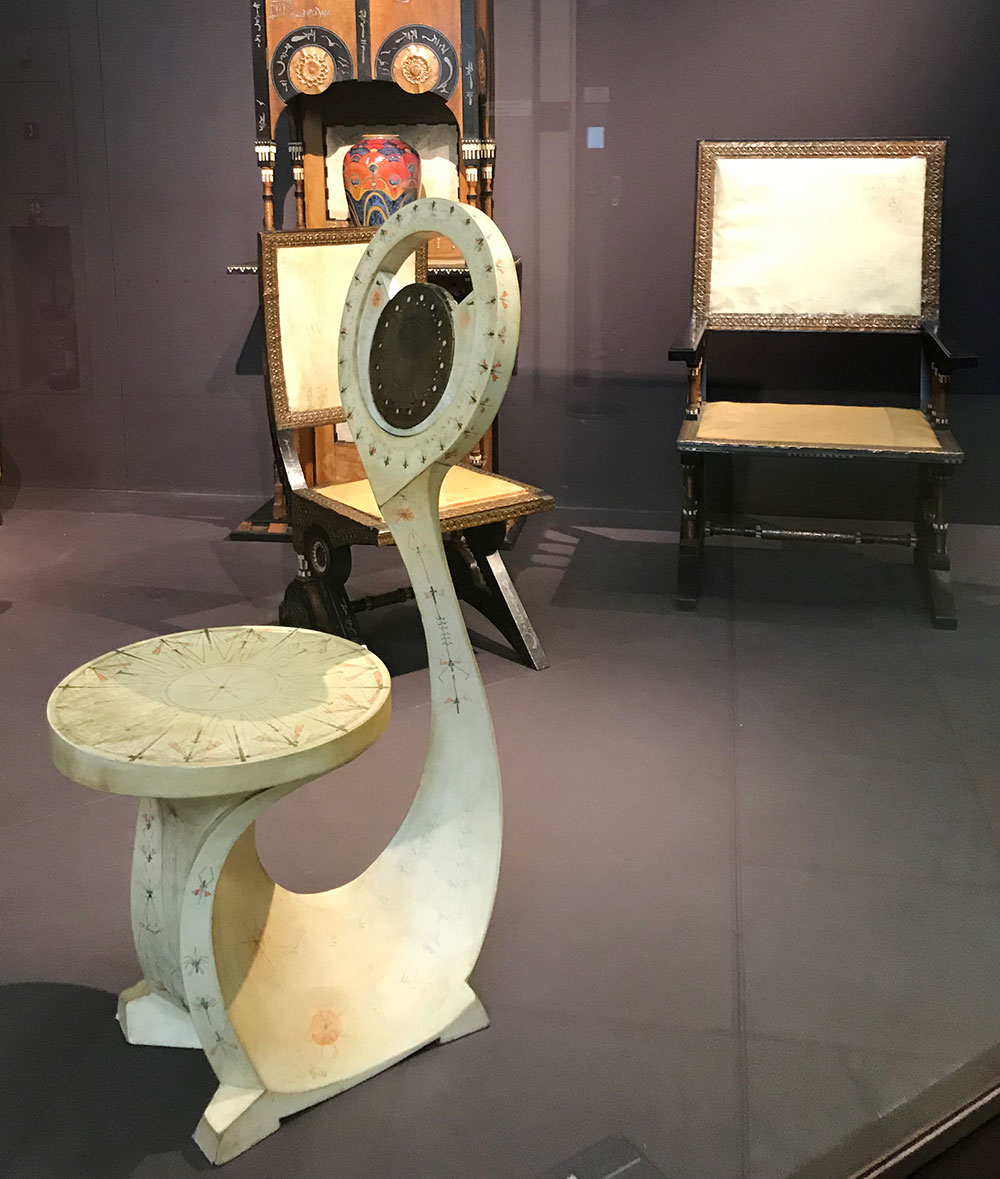
This furniture below made by Antoni Gaudí evokes the spirit of the Casa Batlló in Barcelona, in which he worked between 1904 and 1906. The industrialist José Batlló had asked him to modify a house he owned, built in 1877 by the architect Luis Sala Sánchez. From the transformations made by Gaudí, innovative architectural forms were born.
The interior of the apartment that the owner reserved, on the second floor, is decorated using the same rhythm that runs along the facade. The rooms, which exclude any flat surface and orthogonal line, follow one another in the manner of organic cells. The coffered ceilings, frames and fixed furniture merge with the walls.
The cabinet in the dining room, unique piece, is a beautiful example of this perfect integration. It constitutes one of these organic forms that arise from the architecture to participate in the decoration of the interior space. Due to the subtle convexity of its plan and the cutting of the panels, it echoes the vertical crossbars of the first two floors of the facade.
This mirror, which formed a pair with a second almost identical but inverted, comes from the apartment of the first owner of the Casa Mila in Barcelona. This building in Barcelona had been commissioned from Gaudí by a textile industrialist, Don Pedro Milà Camps. The Orsay museum also retains a console from this interior decoration.
This spectacular Boiserie in the dining room created by Alexandre Charpentier is probably the epithome of the Art Nouveau collection of the Museum d’Orsay.
This set of furniture remained relatively poorly known, until it was dismantled and purchased for the future Orsay museum in 1977. It is the only preserved decoration of Charpentier. It was Adrien Bénard (1846-1912) who commissioned it for the dining room of his town of Champrosay (Essonne). He was one of the patrons of the artists of the Art Nouveau movement. Also, under his presidency, the Compagnie du Métropolitain, chose Hector Guimard to make the entrances to the underground network.
In 1900, Charpentier had already made several interior decorations. But it was in Champrosay where he was more innovative.
In this dining room, he used only plant elements for decoration. Each panel is sculpted with a different motif – bells, rose bushes, raspberries, chickpeas, beans – whose lightness responds to the fluidity of powerful structural curves.
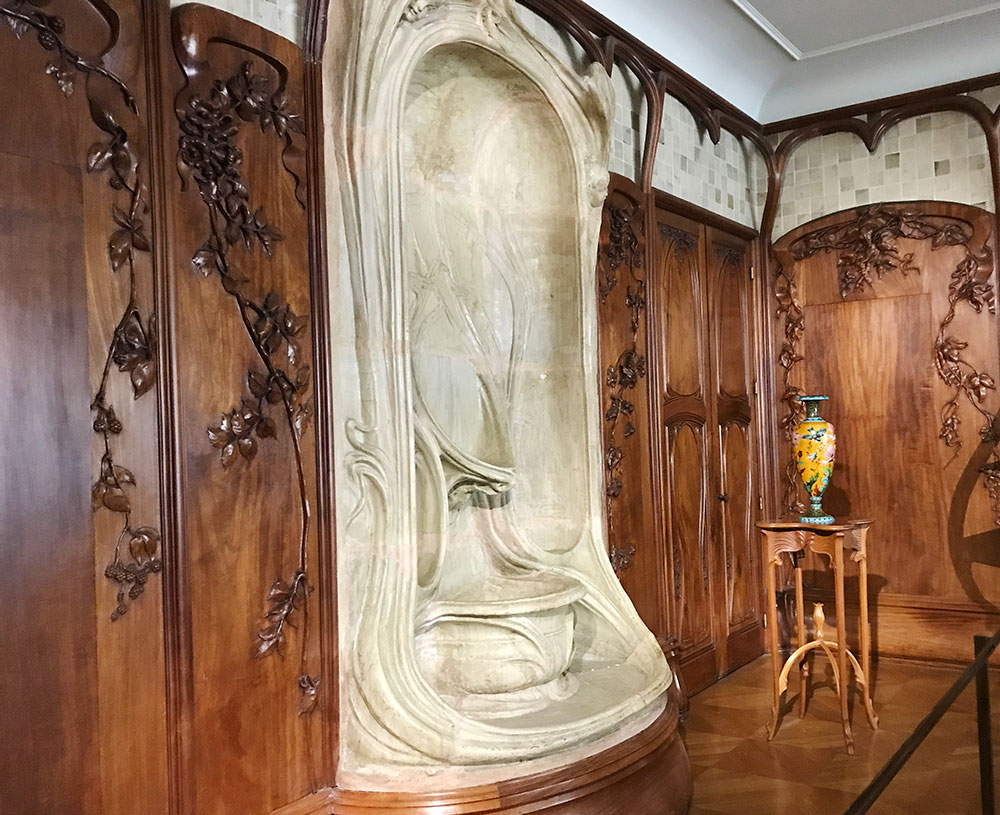
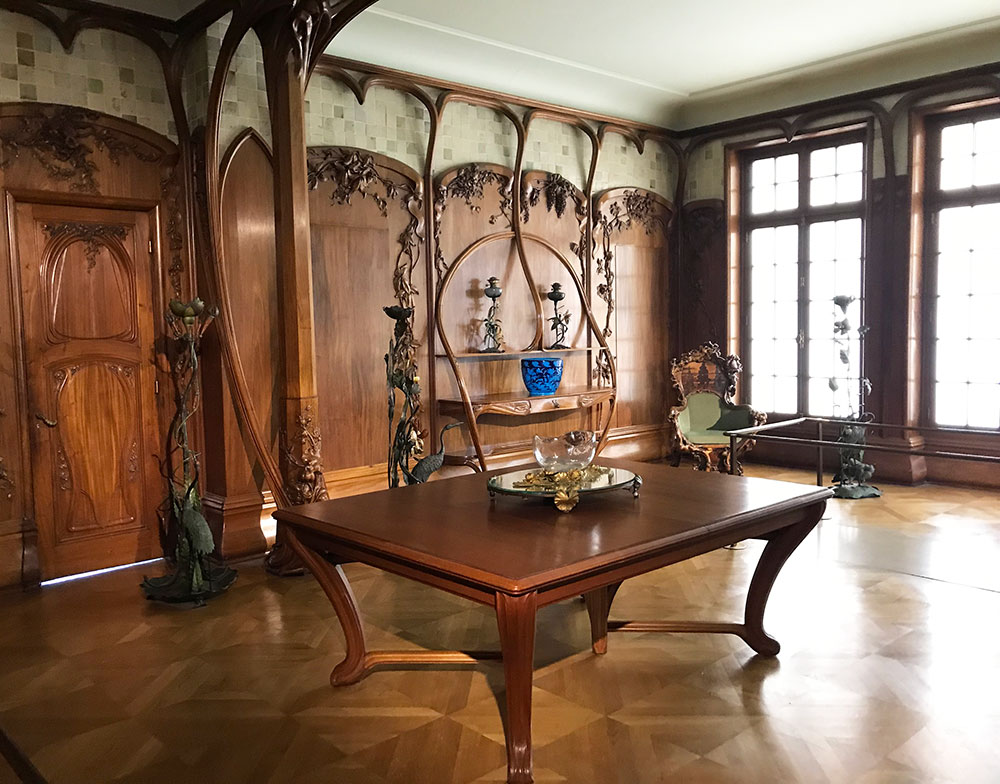
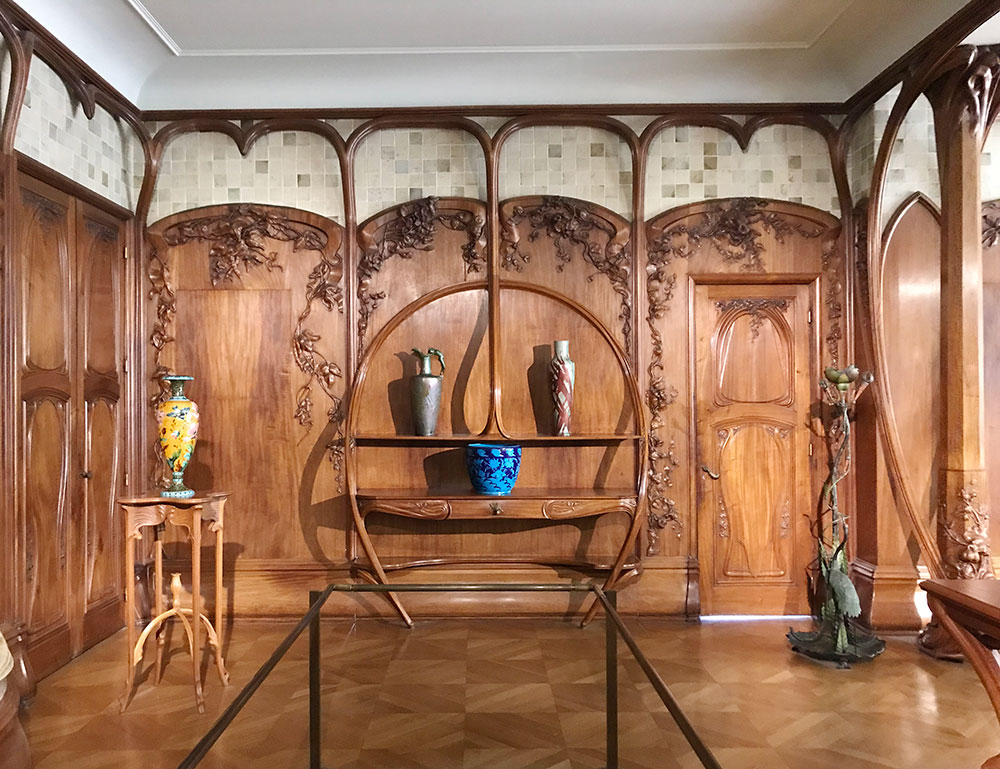
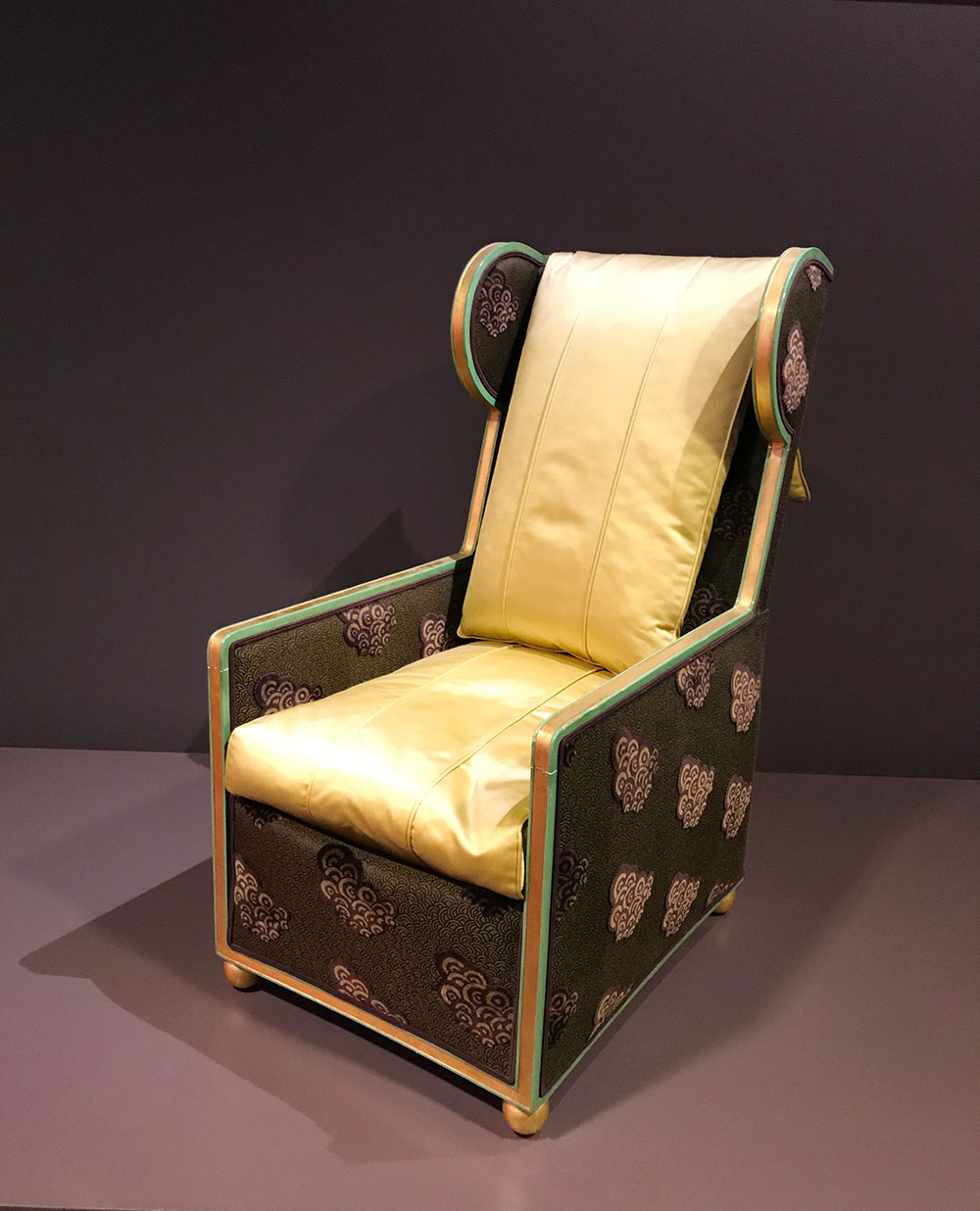

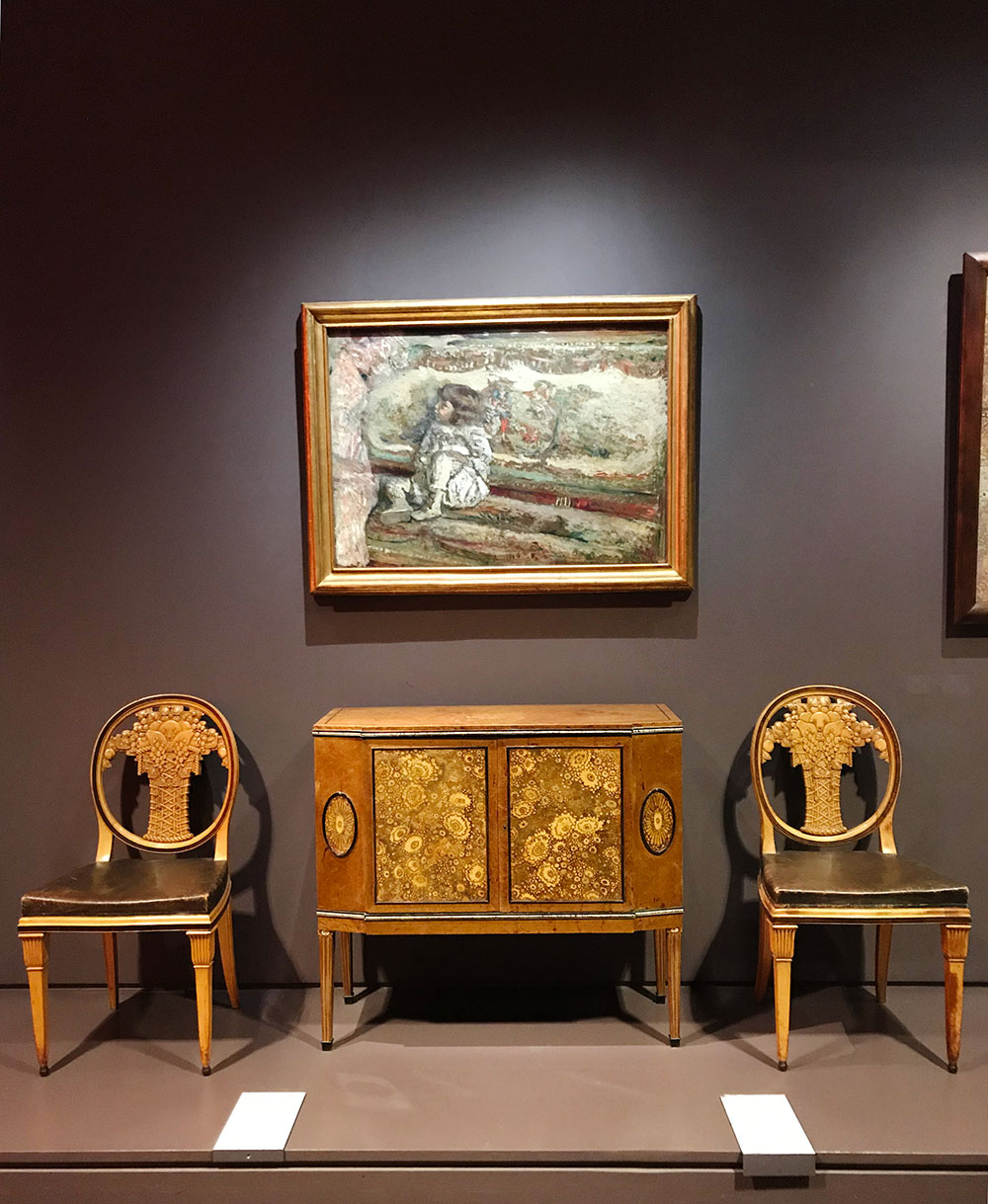
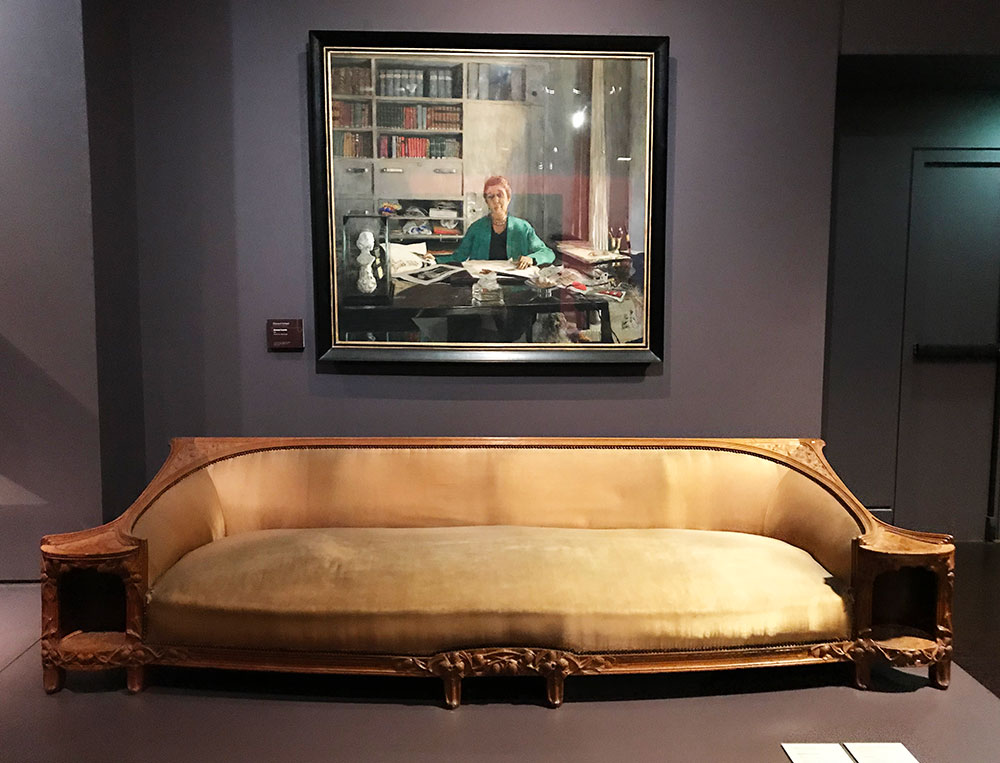
The main representative of the Art Nouveau movement in France was Hector Guimard and here is one of his famous creations – “the smoking bench”. The main idea of the Art Nouveau is that the decorative object or the furniture should not be isolated in a room, but fully integrated in the style of the house as a whole. Guimard, famous for its Paris metro entrances, applies this principle to one of its most important works: the Castel Béranger, in the 16th arrondissement of Paris, for which he designed all the furniture.
Another feature of Art Nouveau is plant inspiration; here it transpires in the animation of this asymmetric sidewalk whose foot looks like a trunk from which flexible animated branches grow like vines.
This original furniture, almost extravagant, was designed to be placed at the angle of a room, as evidenced by the small cabinet that appears suspended, enhanced by a shelf that forms a ceiling. The seat cover of the original bench seat, embroidered, has had to be replaced.
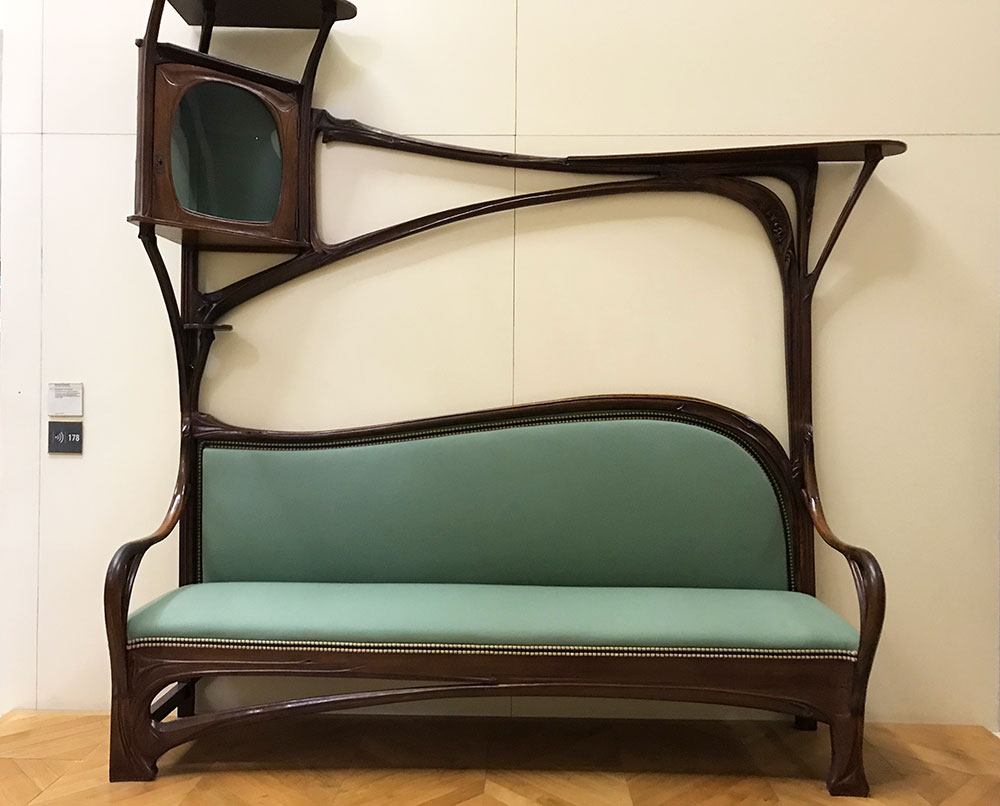
This unusual washing basin was made François Rupert Carabin. The sculptor, Carabin dedicates part of his activity to the decorative arts. This interest gives birth, between 1890 and 1904, to about twenty pieces of furniture, in which the artist expresses all his sculptor temperament. His accomplishments are worth especially for his daring representations of female nudity, which fulfill an architectural or ornamental function.
Like Emile Gallé, Louis Majorelle is inspired by lines of plant shapes for the supports, uprights and crossbars of his furniture.
Majorelle here remains faithful to the waterlily, a subject with which he obtained immense success, on the occasion of the Universal Exhibition of 1900. Both the rounded seat, and the drawing of the armrests evokes, in effect, the large leaves of the waterlily that rest in Water. Undoubtedly, this aquatic motif suits the decoration of the Blue Waters, summer residence of Eugène Corbin, started in 1887 and decorated in the Art Nouveau style, between 1900 and 1910.
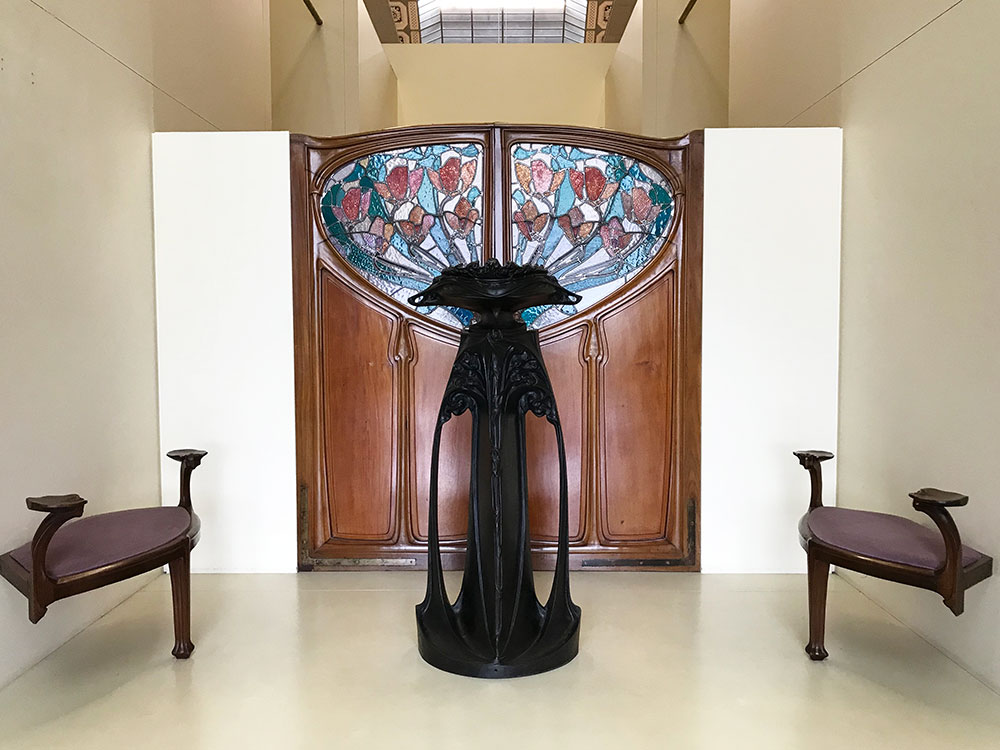
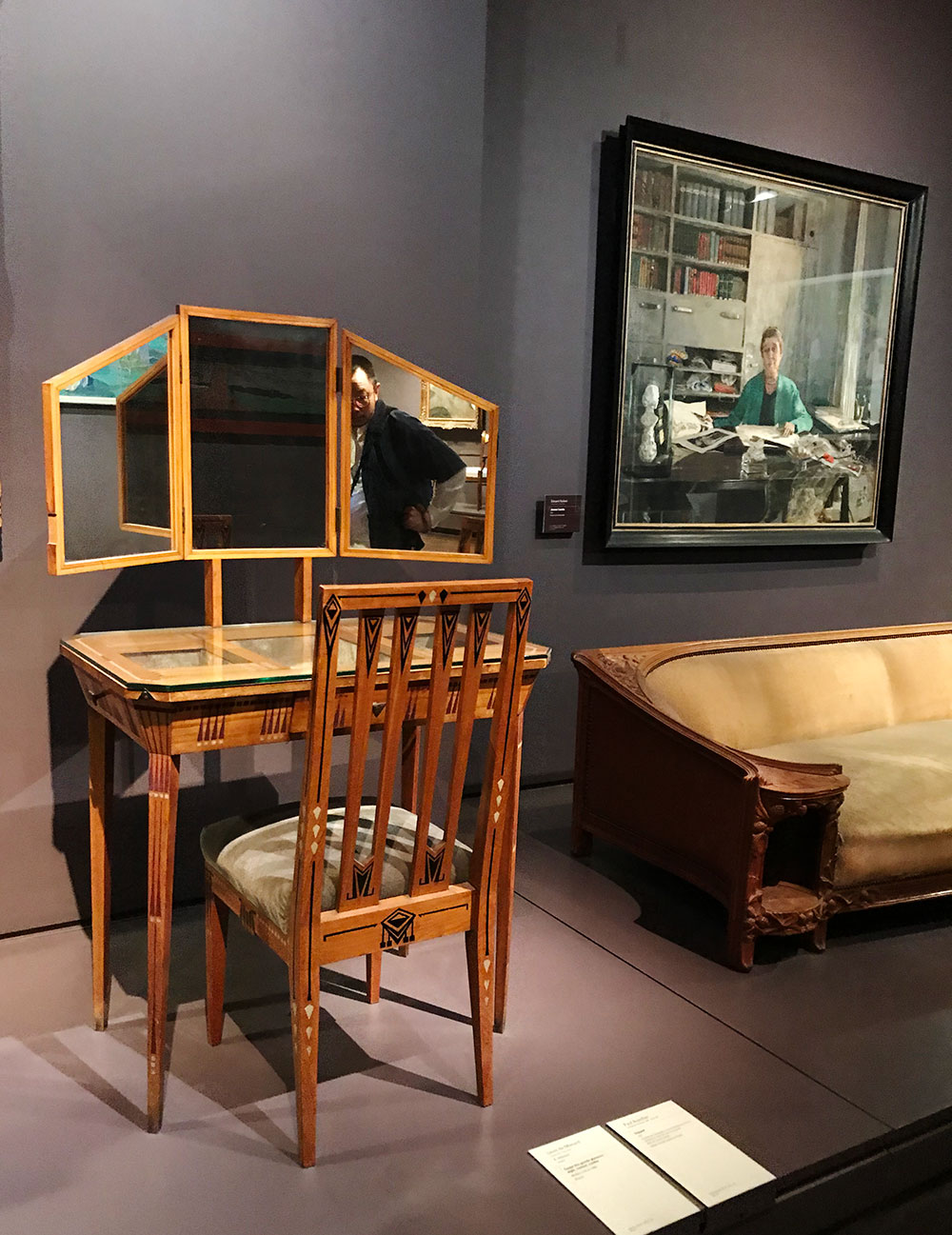
We know the importance of the role played by the sculptors – Carriès, Dampt, Charpentier, etc. -, at the end of the 19th century, in the development of the Decorative Arts. The title of pioneer corresponds to Carabin with this library.
The genesis of the furniture is known thanks to the artist’s manuscript notes written in 1915. The library was commissioned at the beginning of 1889, by an amateur “who did not have much money but open ideas.” Its realization however required a lot of time and resources. So it is truly a “masterpiece”, being the term taken in the sense of artisans of the past, which Carabin presents, not without some pride, in his workshop for a few days in March 1890.
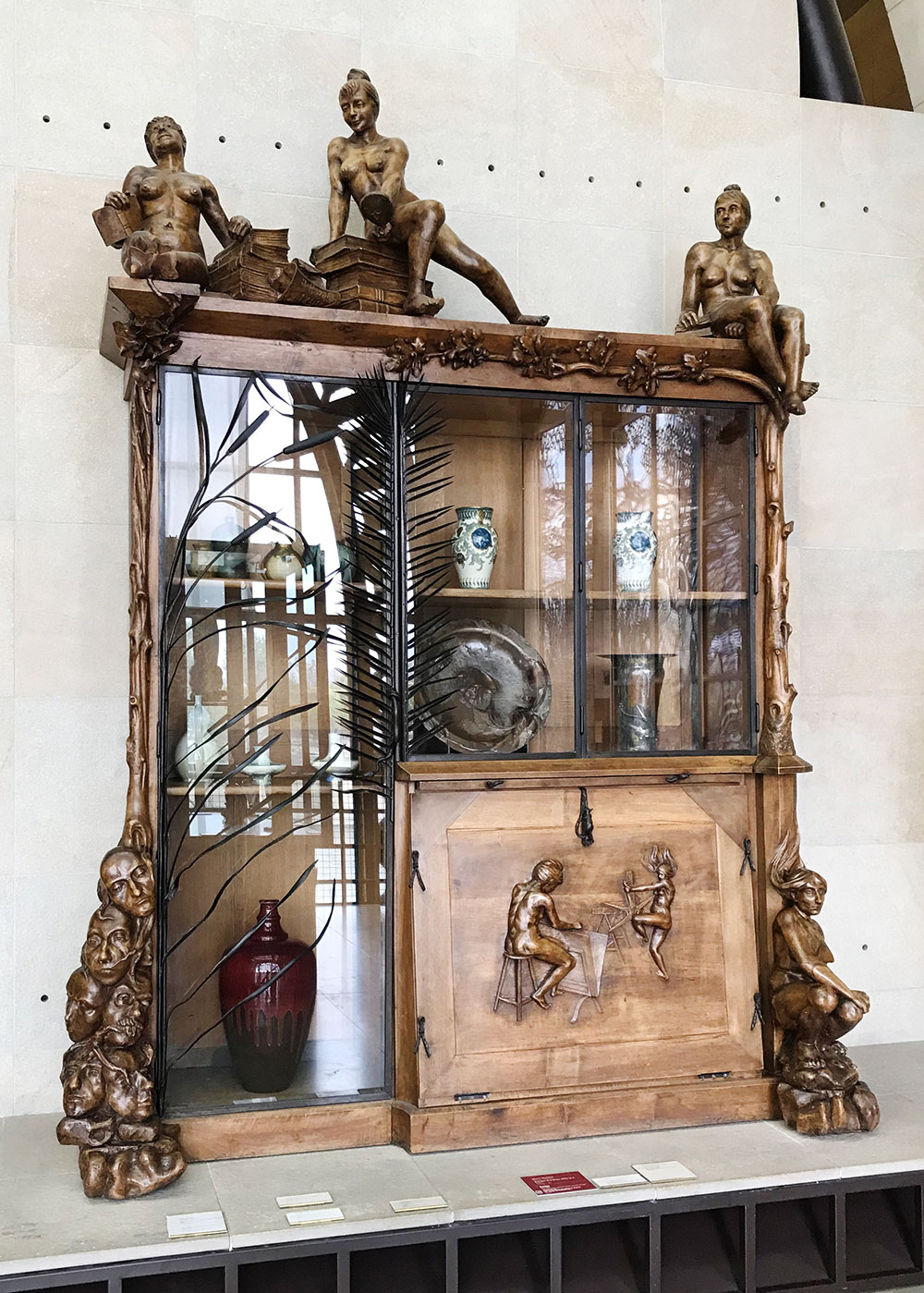
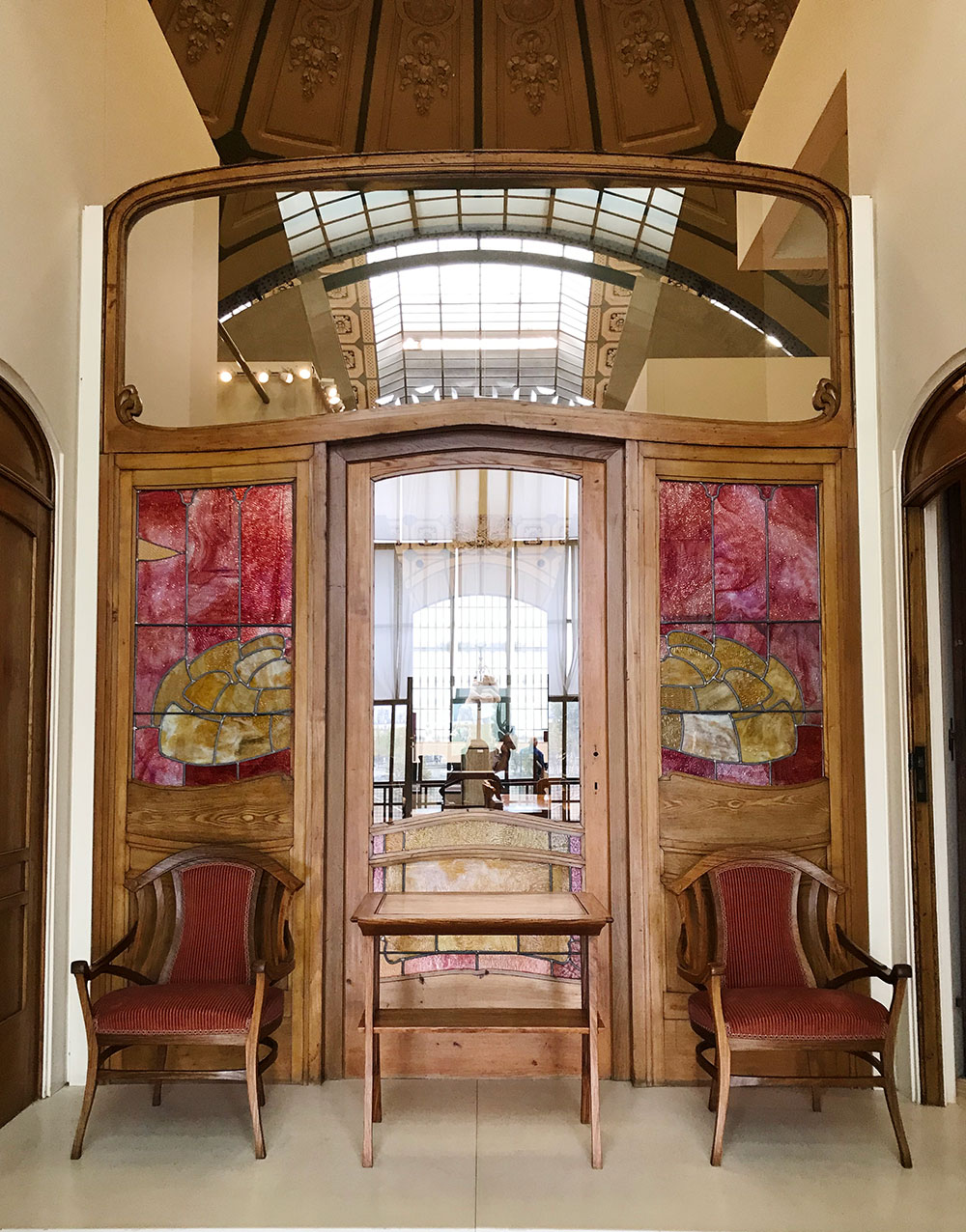
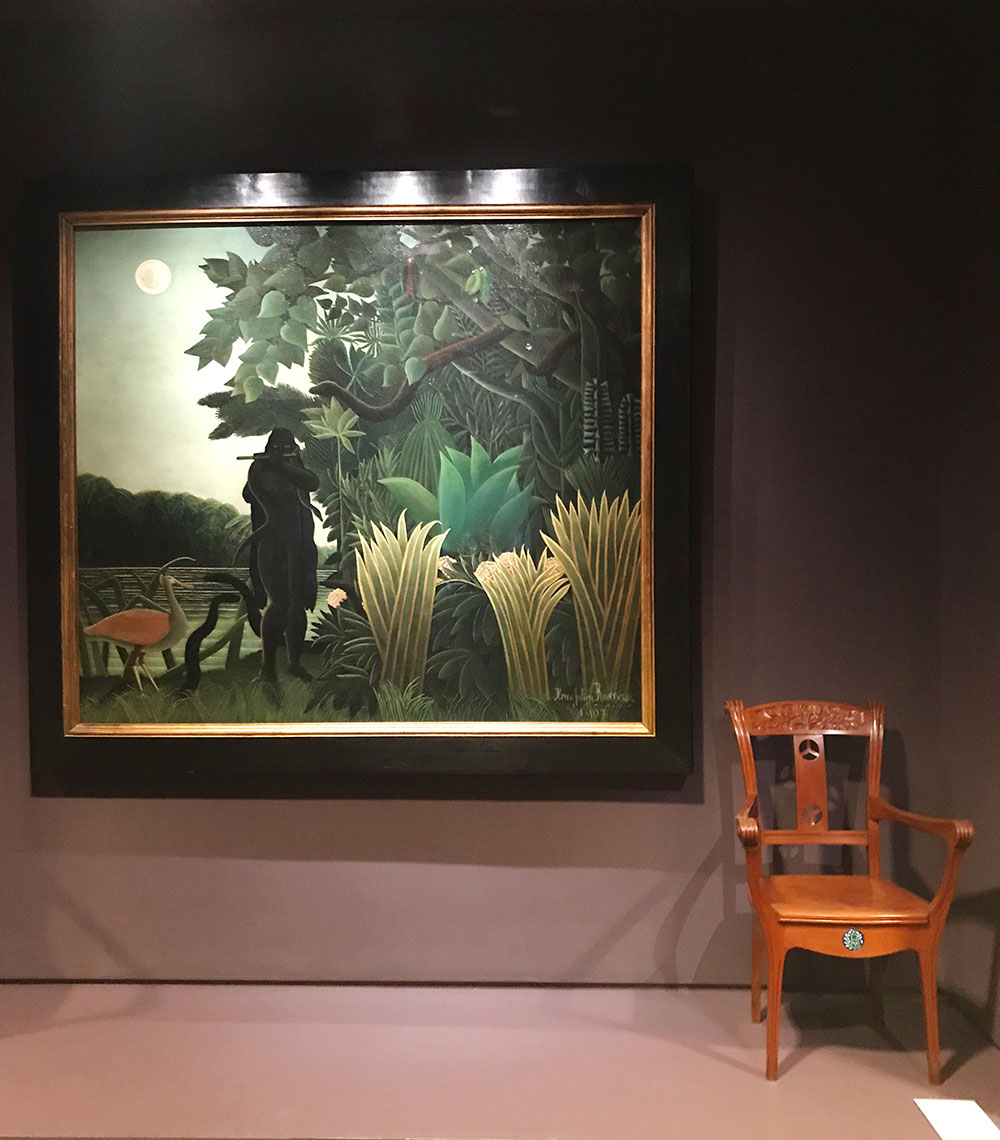

Want to learn more about various furniture styles? Check out my “History Of Styles” eBook:

